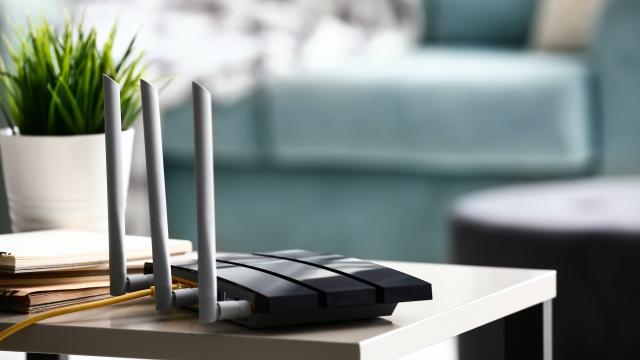A router is the piece of hardware in your home that makes wifi possible. Being able to change the settings on your router, and thus the security, name, and accessibility of your wifi, is essential for your safety and convenience. The first step is logging into your router.
Identifying your router
The router can be a standalone device, or your modem can act as a router as well. If you’re confused about what piece of hardware is your router, start with the cable line coming into your home. It will terminate in your modem or cable box. From the modem, follow the cables plugged into the back. If nothing is plugged in, your modem is also your router. If the cables go to other devices that you know for sure are not a router, then your modem is also your router. If the cables go to a piece of hardware you don’t recognize, google the name of the hardware—there’s a good chance it’s your router.
Although your router is a physical piece of hardware, located physically near you, you’ll access the router is online, so you’ll need your computer or phone or some other internet capable device to log in. The good news is that the process for logging in is the same whether it’s a modem/router combo or just a router, and it doesn’t matter if you own the router or rent it from the internet provider.
Finding your IP address
You access your router by going to a specific address (IP) online, which you type into your browser. It’s a series of numbers, rather than a domain name like Google.com. Now, most routers use the same IP –192.168.1.1. It’s worth skipping ahead and seeing if that IP address works, but if it doesn’t, here’s how to find your IP.
On Windows
Go to your Windows search bar and type in “Hardware and connection properties.” It should bring up your internet settings, but if it doesn’t, go to Settings > Network & Internet > Status > View hardware and connection properties. The panel that comes up will have a line, if you scroll, called “default gateway” and that is your IP address.
On Apple
Click the Apple icon and go to System Preferences. Select Network > WiFi, and select your wifi network. Click Details, and you will see your IP address next to Router.
Connecting to the router via browser
Now, open your browser and where you’d normally put a website address, put the IP address and hit “enter.” You should see a login, asking for a username and password. There are two possible answers, so don’t get worried if you don’t remember setting up a username and password for your router. Chances are, you never did, and this is still set to the default username and password. Try locating the name of your router on this list and then attempt to login with the default username and password. As you can see, it’s just downright scary how many use “admin” and “password” as the username and password. Make a note now to change both, and then log them into your password manager.
If this doesn’t work, and you think you might have set up a username and password for the router and just don’t remember it, you might be able to recover it, if there’s a password recovery feature.
The absolute last resort is resetting the router altogether. This means that the router will go back to the factory settings, and as such, the default username and password. It also means that you’ll need to log in every single device that is connected to wifi, including every smart device. You’ll need to set up the association between the router and modem, too. In short, it’ll suck, but you’ll have control of your router again. Upside: If you were logging in to change the name of your wifi, password or almost any other setting, you were going to have to log everything back in anyway.
What you can do while logged into your router
First, please heed our advice and change your username and password to something unique to you. If you’re concerned about security in the least, your router represents a really obvious access point.
If you’re over the name of your wifi network, you can change it and also the password to it. You can also likely set up a guest network for friends and other people who you may trust enough to give wifi access to, but not enough to control what’s on your Sonos. A guest network will keep your network and your playlist safe.
Different routers offer all kinds of different features, including quiet times, the ability to prioritize devices, exclude devices, or put limits on usage. Looking around while you’re in your router settings will familiarize you with what’s possible, and many routers have quick start guides.

Leave a Reply
You must be logged in to post a comment.